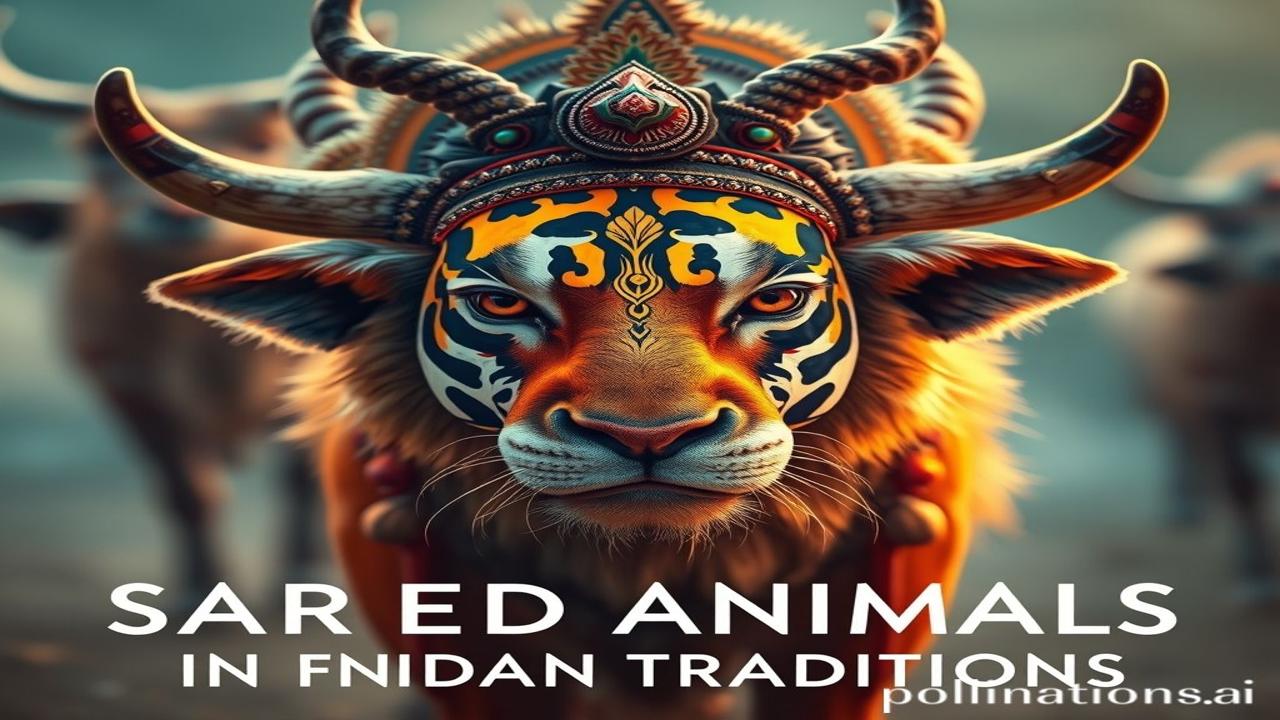Sacred Animals in Indian Traditions: Jahan Pathar Bhi Bhagwan Ho Jate Hain…
Kabhi socha hai, jab suraj ki pehli kiran kisi purane mandir ke gumbad ko chumti hai, toh kya hota hai? Waqt tham sa jaata hai. Ek aisi duniya dikhti hai jahan insaan aur jaanwar, dono hi pavitra maane jaate hain. Where the lines between the divine and the earthly blur. Aaiye, aaj hum issi khoobsurat duniya mein dubaara kho jaayein – sacred animals ki duniya, according to Indian traditions!
Itihasik Prasthabhumi / Historical Context: When Animals Became Divine
What are we talking about? Simply put, India mein kuchh janvar aise hain jinhe hum sirf janwar nahi, balki Bhagwan ka roop maante hain. This goes back millennia, to the Indus Valley Civilization (around 3300-1700 BCE). Mohanjodaro aur Harappa ki khudai mein jo seals mile hain, unmein bhi animals ki figures hain, showing their importance.
Why is this important? Well, these animals represent different deities, qualities, and even cosmic forces. They are not just symbols; they are integral to our understanding of dharma, karma, and the interconnectedness of all life. Socho, how different is that from seeing animals as mere resources!
Zameeni Sach: Logon Aur Jeevan / The Human Element
Imagine a small village, hundreds of years ago. Ma Rukmini ne aaj apne gaay (cow) ki puja ki. Not just because the cow gives milk, but because she embodies dharma and abundance. The farmer, Ramlal, carefully plows his field with the help of his bullocks, thanking them for their strength and companionship. Even the children know stories of Hanuman, the monkey god, and his unwavering devotion.
In the royal courts, the elephant was a symbol of power and majesty. Raja Vikramaditya’s prized elephant, Gajraj, was not just an animal; he was a part of the kingdom’s identity. Artisans crafted intricate carvings of elephants on temple walls, celebrating their strength and wisdom. These weren’t just decorations; they were declarations of faith. Yeh sab milakar hee toh India hai, isn’t it?
Dharohar Aur Pehchaan / Cultural Significance Today
Aaj bhi, in sacred animals ka impact hum dekhte hain. Gaay ko hum “Gau Mata” kehte hain. The bull, Nandi, is worshipped in Shiva temples. Hanumanji toh har ghar mein pooje jaate hain. Even snakes, often feared, are revered on Nag Panchami.
You’ll see these animals in our art, architecture, festivals, and even our language. Think of the ‘Shere-e-Punjab’ epithet for Maharaja Ranjit Singh, highlighting his lion-like courage. It’s all connected to Bharatiyata – our Indianness – a deep respect for nature and all living beings. And that is modern identity too; in a world of pollution and destruction, this ancient wisdom matters more than ever!
Mazedaar Tathya Ya Bhram-Bhanjak / Fun Fact & Myth-Buster
Myth: People often think that the reverence for cows is purely a modern phenomenon.
Truth: Actually, the respect for cows goes back to ancient times! In Vedic texts, the cow is referred to as ‘Aghnya’ – not to be killed. It’s deeply rooted in our agricultural past and our understanding of sustenance.
Fun Fact: Did you know that some temples in South India have elephants that bless devotees with their trunks? It’s a unique and heartwarming experience.
Drishya Aur Bhavnaen / Visual & Sensory Layer
Visualize the air in Vrindavan – the scent of incense and jasmine. Feel the cool, smooth marble of a Nandi bull statue in a Shiva temple. Hear the chanting of “Om Namah Shivaya” echoing through the halls.
Imagine the bustling streets during Ganesh Chaturthi, with colorful elephant idols parading through the streets, drums beating, and people dancing. Taste the sweet peda offered as prasad. The sights, sounds, smells, and tastes – they all intertwine to create a powerful sense of devotion and celebration.
Antim Vichar Ya Uddharan / Closing Insight
“Sarve Bhavantu Sukhinah, Sarve Santu Niramayah” – May all be happy, may all be free from illness. This ancient shloka perfectly encapsulates the spirit of reverence for all life, including the sacred animals that play such a vital role in Indian traditions. In remembering and honoring them, we also honor a profound connection to our past and a deeper understanding of our shared future.
